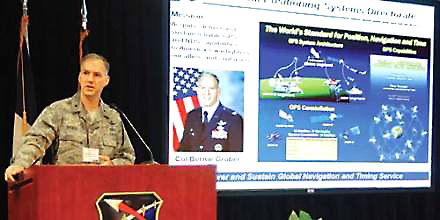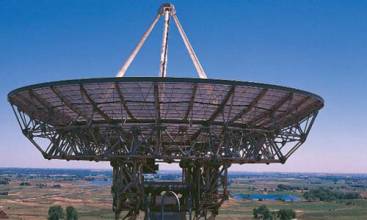 Christopher Hegarty
Christopher HegartyPerhaps for the first time in the nearly 40 years of satellite navigation, all four GNSS programs and regional systems appear to have firm — if not always unencumbered — development paths ahead of them.
GPS, GLONASS, Galileo, Compass/Bei- Dou, Japan’s MSAS and QZSS, and India’s GAGAN and IRNSS systems are bringing new or modernizing elements into the world. Key program enablers — such things as budgets, satellite construction, launches and launch vehicles, new signal designs — all appear favorably aligned.
Perhaps for the first time in the nearly 40 years of satellite navigation, all four GNSS programs and regional systems appear to have firm — if not always unencumbered — development paths ahead of them.
GPS, GLONASS, Galileo, Compass/Bei- Dou, Japan’s MSAS and QZSS, and India’s GAGAN and IRNSS systems are bringing new or modernizing elements into the world. Key program enablers — such things as budgets, satellite construction, launches and launch vehicles, new signal designs — all appear favorably aligned.
Despite these encouraging conditions, however, many unknowns remain ahead: technical and political challenges on the one hand, and opportunities to optimize potential inter-system synergies on the other.
To help assess and sort out the issues surrounding GNSS modernization, we called on the expertise of Christopher Hegarty, director for communication, navigation, and surveillance engineering and spectrum at The MITRE Corporation.
Hegarty played an instrumental role in the selection of the frequency for the GPS third civil signal (L5), co-led the development of the specification for this signal, served on a U.S./European technical working group that helped produce agreement on a common L1 civil signal design, and has also been an active participant in U.S. bilateral discussions with all other foreign satellite navigation service providers.
His current work focuses primarily on aviation applications of GNSS and on issues of GPS compatibility and interoperability. Hegarty is coeditor of Understanding GPS: Principles and Applications, Second Edition (Artech House, 2006).
IGM: As additional GNSS systems are built and modernized, what aspects of RF compatibility and system interoperability would be most helpful for GNSS system operators to address in multilateral agreements?
HEGARTY: RF compatibility is all about ensuring that satellite navigation systems do not interfere with each other. Critical aspects to ensure RF compatibility include maximum power levels per satellite and per signal, constellation design (which affects how many signals may be simultaneously visible), signal design (e.g., frequency and modulation), and user equipment assumptions (e.g., antenna gain pattern, receiver minimum-tolerable signal-to-noise ratio).
It would help if operators could agree upon the method to compute intersystem interference. This has already been accomplished in part within the International Telecommunication Union Radiocommunication Sector (ITU-R), for example ITU-R Recommendation M.1831. Some additional multilateral progress on input assumptions, thresholds, and details not yet included in M.1831 may be beneficial.
Interoperability focuses on commonality amongst systems that benefit the end user. We have seen a convergence in some key areas, such as time and geodesy systems, with most GNSS providers aiming to realize reference systems that are aligned as closely as possible to the International Terrestrial Reference Frame (ITRF) and the international atomic timescale (TAI). For the end-user, commonality in signal carrier frequencies is probably most important to minimize equipment costs. Modulation and navigation data commonality may be nice-to-haves, but are of far lower importance.
IGM: Some have suggested the need for a cooperative effort among system providers to monitor, assess, and provide timely reports on the signal quality and operational performance of all the GNSS systems. What might such a cooperative effort look like and what would be the most important elements of system and signal performance to monitor?
HEGARTY: In a perfect world, very close cooperation — including the sharing of monitoring station facilities and data amongst service providers — would be a very efficient way of implementing GNSS. Unfortunately, sovereignty and national security concerns will likely result in the core services being provided through largely independent ground networks. Limited cooperation for some services, such as inter-system time offsets, is planned for some systems already and will likely be implemented for others. More fully cooperative monitoring will, in my opinion, be more successful for the global scientific community that already share network resources (e.g., the International GNSS Service).
IGM: Some GNSS user communities are advocating implementation of an enhanced capability within the GNSS system infrastructures to provide signal integrity and authentication. Is that practical, or should it be a responsibility of third-party service providers and/or equipment manufacturers to meet those needs?
HEGARTY: Signal integrity and authentication are very different capabilities. Provision of very high levels of integrity within core constellations including GPS and Galileo has somewhat fallen out of favor. The costs and risks — technical and political — are very high versus the alternative of meeting the requirements for high-integrity applications (e.g., civil air navigation) using augmentations that are under regional or the end-user’s control.
As for authentication, although it is a subjective judgment as to whether threats exist that warrant it, the implementation costs are sufficiently low that we may see this measure implemented upon some GNSS signals in the near future.
IGM: Can anything be done in the basic design of GNSS space and ground infrastructures to reduce the effects of so-called personal privacy devices or jammers on GNSS receivers?
HEGARTY: The new GPS signals, and the signals for emerging GNSS constellations, include several design features – notably pilot components that are not modulated by navigation data – that makes them somewhat more robust to interference. However, privacy devices are also evolving, and it is very difficult to win the jamming game without resorting to other navigation sensors or techniques such as multi-element antennas that are not likely to ever be widely adopted by the civilian GNSS user community.
A better approach, in my opinion, goes back to the guidance that has been issued for centuries for the ìprudent navigatorî to not rely solely on any single source of positioning information. Although advances in other sensors such as inertial measurement units have been developing more slowly than many have predicted, such advances are still occurring and will see increasing use to supplement GNSS and traditional ground-based navigation aids.
One in a series of articles sponsored by NovAtel Inc.




